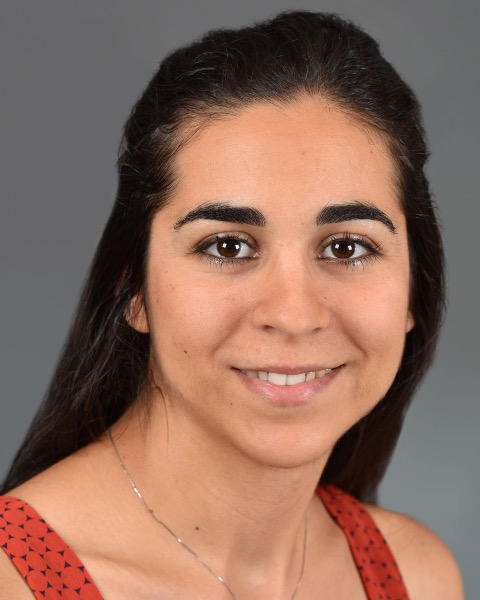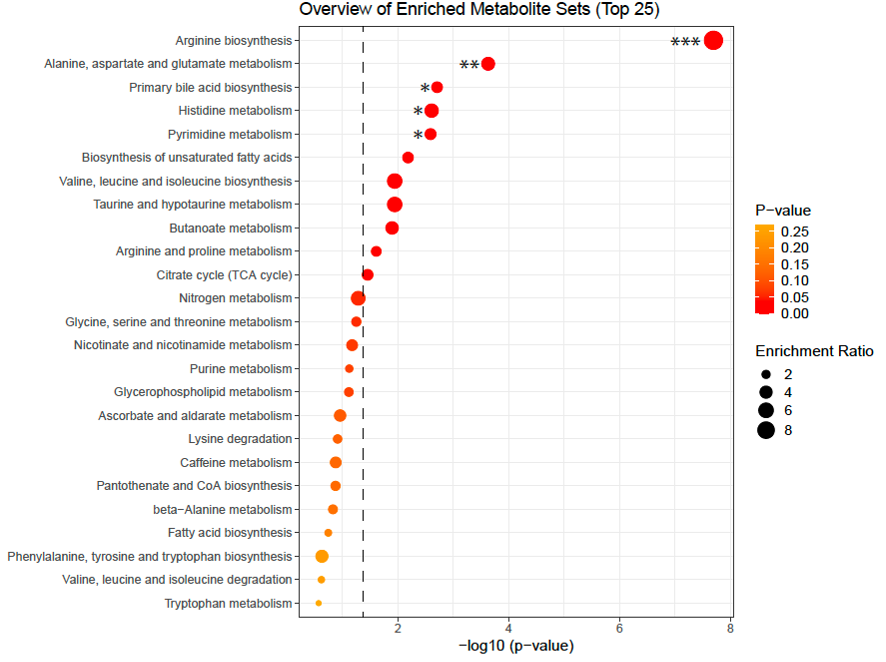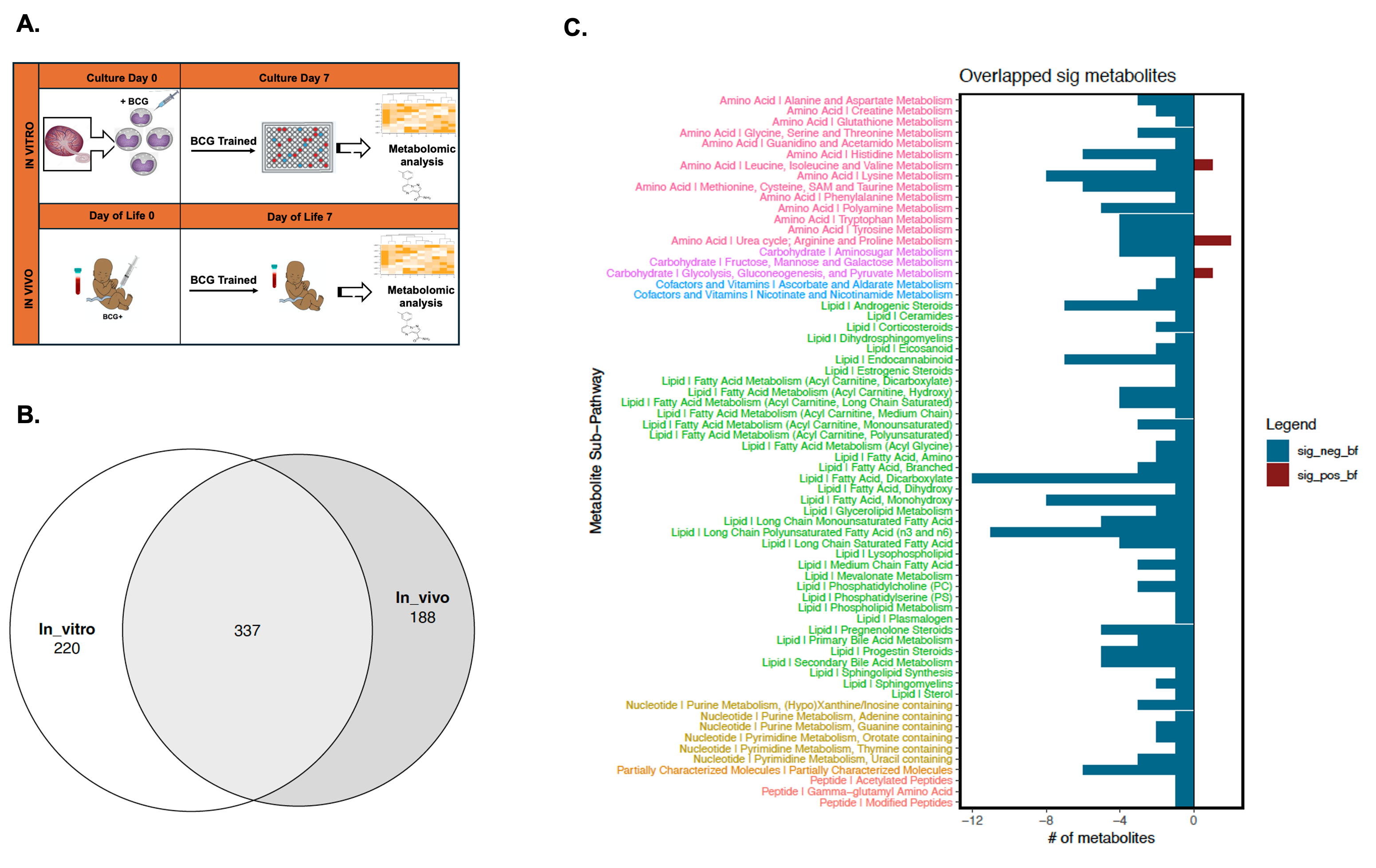Neonatal Infectious Diseases/Immunology 4: Immunity in early life
Session: Neonatal Infectious Diseases/Immunology 4: Immunity in early life
061 - Bacille Calmette-Guérin (BCG) vaccine induces distinct shifts in the human newborn monocyte metabolome in vitro and peripheral blood plasma in vivo: Implications for neonatal trained immunity
Sunday, April 27, 2025
8:30am - 10:45am HST
Publication Number: 61.3805
Asimenia Angelidou, Harvard Medical School, Boston, MA, United States; Caitlin Syphurs, Boston Children's Hospital, Boston, MA, United States; Jing Chen, Boston Children's Hospital, Boston, MA, United States; Eva Illuzzi, Boston Children's Hospital, Brookline, MA, United States; Tobias R. Kollmann, Dalhousie University, Halifax, NS, Canada; Jessica Lasky-Su, Brigham and Women's Hospital, Boston, MA, United States; Simon D.. van Haren, Boston Children's Hospital, Boston, MA, United States; Ofer Levy, Precision Vaccines Program, Boston Children's Hospital, Boston, MA, United States; Joann Diray-Arce, Harvard Medical School, Boston, MA, United States; Olubukola T. Idoko, LSHTM, Lyon, Rhone-Alpes, France

Asimenia Angelidou, MD PhD (she/her/hers)
Assistant Professor in Pediatrics
Harvard Medical School
Boston, Massachusetts, United States
Presenting Author(s)
Background: BCG vaccine protects infants against disseminated tuberculosis (TB) and infections unrelated to TB via incompletely understood mechanisms, including metabolic reprogramming of innate immune cells.
Objective: To characterize BCG-induced age-specific shifts in extracellular metabolites of human monocytes (Mos) and innate immune training (reprogramming) in vitro, and compare these with BCG-induced effects on the plasma metabolome in vivo in a neonatal cohort recruited through the Expanded Program on Immunization Consortium (EPIC) in The Gambia.
Design/Methods: We used a human in vitro Mo training (MOTRA) platform to identify metabolites significantly perturbed after BCG stimulation and reprogramming. Newborn (NB, n=9) and adult (AD, n=9) CD33+ Mos were exposed to RPMI (control) or stimulated with BCG (SSI, Denmark) for 24h, washed and cultured for 6 days prior to stimulation with lipopolysaccharide for 24h. Day 1 (D1, post-BCG stim) and D7 (BCG reprogrammed) supernatants were subjected to mass-spectrometry-based global metabolomic analysis. We validated our findings in a NB cohort from The Gambia (N=30), phlebotomized pre- (DOL 0) and 7 days post-BCG vaccination for blood plasma metabolomic analysis.
Results: 1249 metabolites were detected in BCG-conditioned Mo supernatants. Principal component analysis demonstrated a distinct separation between NB and AD. Top differentially enriched pathways in BCG-reprogrammed NB vs AD Mos included steroid (progestin and estrogenic steroids) and fatty acid metabolism (acylcarnitines), while significant differences between trained NB vs AD were also observed in tryptophan catabolism (kynurenine increased in AD) and the tricarboxylic acid (TCA) cycle (citraconate/glutaconate decreased in NB) (Fig.1), the latter indicating a stronger effect of BCG training on neonatal Mo mitochondrial metabolism.
BCG-trained NB Mo (D7) demonstrated significant enrichment in amino acid biosynthesis/metabolism (FDR < 0.05) and lipid pathways (Fig.2), which were also significantly perturbed in BCG-trained NB plasma. Upon in vitro and in vivo data integration (Fig.3), we identified 337 overlapping significant metabolites, 204 of which shared the same directional change, highlighting downregulation of steroid, dicarboxylate and long chain polyunsaturated fatty acid pathways, suggesting relevance and robustness of the in vitro model. No sex differences were observed.
Conclusion(s): BCG induces distinct shifts of metabolic pathways involved in innate immune regulation that may contribute to age-specific BCG immunogenicity and off-target effects in vivo, and can be modeled in vitro.
Figure 1. Differences in metabolite concentrations between BCG-trained newborn (NB) vs adult (AD) Mo on culture day 7 (D7) .
 A) Volcano plot showing all metabolites whose concentrations changed 7 days after BCG-training followed by lipopolysaccharide (LPS) stimulation: 7 metabolites were upregulated and 10 were downregulated. Linear regression coefficients were used to plot effect size [log(OR), log (odds ratio)]. The top 5 False Discovery Rate (FDR) significant metabolites are labeled. B) Boxplots showing statistically significant differences in metabolite relative intensities between BCG-trained newborn vs adult Mo. There were 4 unnamed metabolites whose boxplots are not shown. Means are compared using the Wilcoxon rank sum test and p-values are adjusted for FDR using Benjamini-Hochberg (BH) procedure. * p<0.05, ** p<0.01.
A) Volcano plot showing all metabolites whose concentrations changed 7 days after BCG-training followed by lipopolysaccharide (LPS) stimulation: 7 metabolites were upregulated and 10 were downregulated. Linear regression coefficients were used to plot effect size [log(OR), log (odds ratio)]. The top 5 False Discovery Rate (FDR) significant metabolites are labeled. B) Boxplots showing statistically significant differences in metabolite relative intensities between BCG-trained newborn vs adult Mo. There were 4 unnamed metabolites whose boxplots are not shown. Means are compared using the Wilcoxon rank sum test and p-values are adjusted for FDR using Benjamini-Hochberg (BH) procedure. * p<0.05, ** p<0.01. Figure 2. Top 25 enriched metabolites sets in BCG-trained NB Mo on culture day 7 (D7).
 Enrichment dotplot in newborn Mo shows significant enrichment of amino acid biosynthesis/metabolism and lipid metabolic pathways. Pathway enrichment was conducted on Metaboanalyst, using the KEGG pathway. Vertical line denotes statistical significance. Stars denote p-values adjusted for False Discovery Rate (FDR) using Benjamini-Hochberg (BH) procedure.
Enrichment dotplot in newborn Mo shows significant enrichment of amino acid biosynthesis/metabolism and lipid metabolic pathways. Pathway enrichment was conducted on Metaboanalyst, using the KEGG pathway. Vertical line denotes statistical significance. Stars denote p-values adjusted for False Discovery Rate (FDR) using Benjamini-Hochberg (BH) procedure. * p<0.05, ** p<0.01, * p<0.001.
Figure 3.
 A) Schema of study design for validation of in vitro metabolomics in an in vivo newborn cohort from The Gambia. B) Venn diagram showing significant metabolites detected in BCG-trained Mos in vitro (Culture Day 7), in BCG vaccinated newborns (DOL 7) and overlapping. C) Pathway bar plot of overlapping significant (p <.01 by Bonferroni correction) metabolites with the same directionality in vitro and in vivo.
A) Schema of study design for validation of in vitro metabolomics in an in vivo newborn cohort from The Gambia. B) Venn diagram showing significant metabolites detected in BCG-trained Mos in vitro (Culture Day 7), in BCG vaccinated newborns (DOL 7) and overlapping. C) Pathway bar plot of overlapping significant (p <.01 by Bonferroni correction) metabolites with the same directionality in vitro and in vivo.
